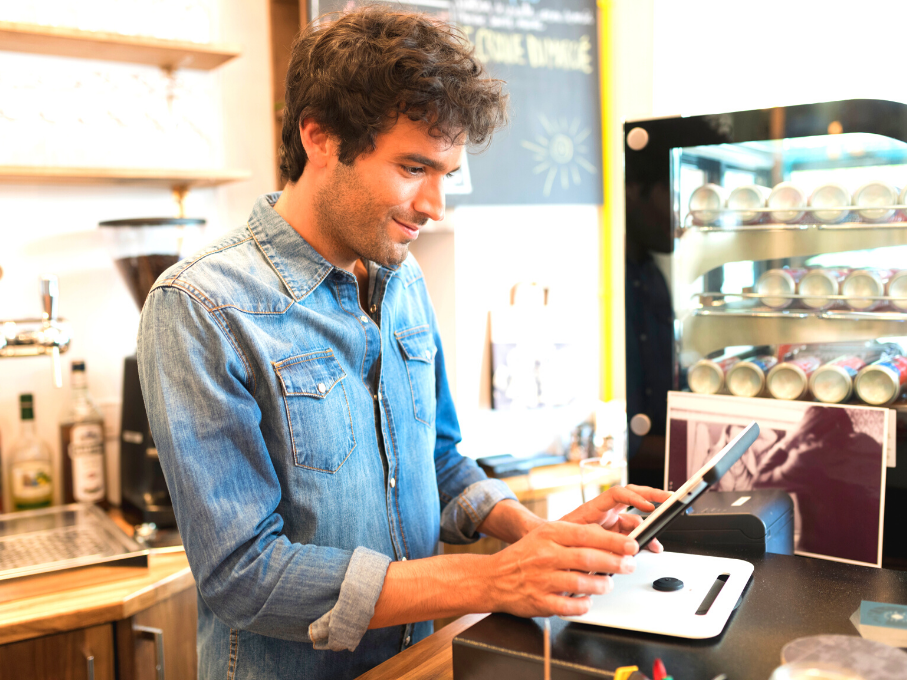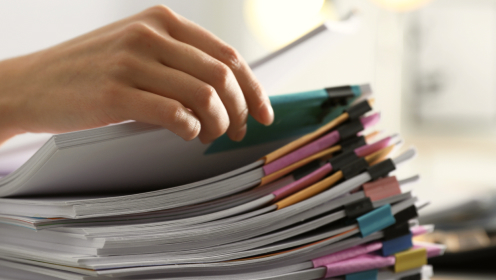 Opening a restaurant is a costly endeavor, and successfully running a restaurant requires strict attention to your restaurant expenses to control costs and increase efficiencies. Few restaurants can get by with paper, pencil, and a stack of excel sheets for manual data entry. Such restaurants miss out on the opportunity to reduce expenses and increase profits by gathering needed insights for operational changes.
Opening a restaurant is a costly endeavor, and successfully running a restaurant requires strict attention to your restaurant expenses to control costs and increase efficiencies. Few restaurants can get by with paper, pencil, and a stack of excel sheets for manual data entry. Such restaurants miss out on the opportunity to reduce expenses and increase profits by gathering needed insights for operational changes.
These insights stem directly from a modern accounting system that systematically labels restaurant expenses, highlights pricing and spending trends, offers comparative industry data, and empowers proactive operations management through continued education.
RASI has built a flexible and robust accounting system specifically built for restaurants to reduce manual labor, intelligently categorize expenses, and put operators in the driver’s seat of their business with clear financial metrics. By viewing easy-to-understand dashboards, operators can get the complete financial picture of their restaurant, track spending relative to their budget (budget to actual), check progress towards financial goals, and drill down into a detailed General Ledger expense report as required.
RASI enables operators to track restaurant expenses and revenue in real-time so that they know what’s happening in their business today, enabling them to make proactive, educated business decisions. With RASI’s system, the chart of accounts is straightforward and streamlined, and the operator is empowered to make improvements in the business based on sound financial data.
Major categories of restaurant expenses
A restaurant cost breakdown and restaurant budget breakdown are both best achieved by reviewing the Profit and Loss Statement. The Profit and Loss statement (P & L) captures monthly restaurant expenses and restaurant fixed costs alongside restaurant revenue.
Here’s a quick run-through of the P&L. Beginning at the top, we have Sales, Cost of Goods, Labor Expenses, Direct Operating Costs, Advertising & Promotion, General & Admin, Maintenance Cost, and Occupancy. Below, we’ll briefly cover a few key categories; see this comprehensive profit and loss article for a more in-depth treatment.
Restaurant Sales
Sales breaks down into two categories: gross sales and net sales. Gross includes sales plus sales tax, comps, and discounts. You want to judge your sales minus sales tax, known as adjusted net sales because you’ll eventually pass the sales tax to the government. Read this article on sales tax impounding to learn how the best practice can benefit your business!
Restaurant COGS
Restaurant Cost of Goods is the cost of all the ingredients you used to produce your food and beverage sold during the period. Don’t forget to include bar consumables such as lemons and olives in this category as well. COGS is half of your prime cost, making it an incredibly important operating metric and a prime area to try and control costs.

Labor
Labor Expenses break into operational payroll costs (hourly wages) for front of house and back of house, and other payroll costs, including salaries, payroll taxes, employee benefits, and employee discounts. You have the most discretion over hourly wages, so focus on efficient scheduling for your sales levels. Note that labor is the other half of your prime costs and an additional area to focus on controlling.
Occupancy
Skipping ahead, the next largest expense is occupancy. This is your rent or mortgage payment on your building, plus property taxes (if you own the building) and utilities.
CHECK OUT THE FULL VIDEO BELOW!
Common Restaurant Expenses
In order to properly categorize restaurant expenses, it helps to review the most common types of expenditures. To simplify the process of tracking restaurant costs, here the 5 major restaurant monthly expenses you need to be aware of:
Food Costs
The most obvious type of restaurant cost is for food. There are two types of food costs:
- Plate costs. Cost for one dish.
- Period costs. Food expense over a specifically defined period of time. This type of food restaurant costs is best tracked with the cost of goods (COGS) formula.
Learn how to calculate your restaurant food cost with this article!
Labor Costs
Take your restaurant’s totally hourly labor and divide it by gross sales…there’s your labor cost! Labor cost and other types of restaurant expenses are fully explained in our Restaurant Accounting Formulas page.
Utilities
Utilities include electricity, water, internet & cable, network costs, and more. To help control this restaurant expense, see if your state or jurisdiction has any plans to offset costs.
Supplies & equipment
Ovens, fryers, tables, and similar items comprise this important restaurant expense category. Looking to limit supply & equipment expenses? Try leasing your equipment and keeping up with a regular maintenance plan.
POS systems
Point-of-sale systems are important for a streamlined sales tracking platform. RASI’s POS integration ensures your POS infrastructure works seamlessly with our restaurant accounting software.
The Difference Between Restaurant Fixed Costs and Variable Costs
Knowing how to differentiate between fixed and variable costs goes a long way in helping your establishment track restaurant monthly expenses.
Variable costs
Restaurant variable costs are those “irregular” expenses associated with operating a restaurant. Unlike more regular costs (we’ll get to those in a minute), variable costs include anything from specialized marketing campaigns to food, utilities, and other hard-to-predict expenses. Given the impact of inflation (to cite just one factor), it’s easy to see how buying food for your menu can vary month to month – or even week to week in some instances!
Fixed costs
Restaurant fixed costs are easier to predict and track. Think of your employee wages and salaries, alcohol license fees, monthly insurance, rent / mortgage, and similar. The good news with fixed costs is that you can anticipate their financial impact with greater certainty than variable costs.
Both types of these restaurant expenses are best monitored with a reliable, rapid-response restaurant accounting software.
How Software Makes Restaurant Expense Management Better
Modern software can significantly ease the labor burden of restaurant expense tracking and management. RASI’s comprehensive restaurant accounting software offers:
- Detailed expense tracking and charting: This allows you to view top-level trends and drill down to General Ledger categories. For example, you can compare your budget-to-actual sales and use declining budgets to more accurately manage your expenses.
- Real-time insight on where your money is going: It’s helpful to understand how your revenue and expenses are stacking up right now, rather than last month. Your ability to make decisions always lies in the present; your accounting data should be there with you. Real-time information enables active management and timely interventions that prevent expenses from getting out of control.
- Standardized financial performance metrics. To keep an accurate measure of your profit and loss, progress towards goals, and overall financial health, it’s critical that you calculate your KPIs the same way from period to period. RASI’s metrics ensure that your measurement methodology will always be consistent.
- Integrated POS, payroll, and accounts payable. RASI enables your data to flow seamlessly from the point of sale to critical financial reporting without human intervention. Add integrated payroll and accounts payable, and your back office will be in great shape.

How restaurant expense management can assist restaurant profitability
To make a consistent profit in the restaurant business, it’s critical that you manage your prime costs, made up (as described earlier) of your COGS and labor expenses. You’ll only be able to do so if you have a solid grasp of your ongoing costs. By tracking and categorizing your inventory and ingredient usage, you can calculate COGS, and make data-informed decisions about what to offer on your menu. Likewise, your labor expenses need to be tracked and categorized appropriately, so that you can allocate shifts to match projected sales, which will be informed by period over period or year over year sales trends.
To expand on trend analysis, when assessing trends within your data, it’s important to measure similar periods, such as January of this year compared to January of last year (month over month comparison). Many restaurants simply track data monthly, but this denies you an accurate basis for analysis, as the restaurant industry displays strong seasonality. Sales for most restaurants will vary from summer to winter, and your forecasting should consider this.
Utilizing a period-based accounting system also assists in identifying trends that deviate from the expected pattern. An example of this may be ingredient costs that are radically different from last year, where an operator can investigate further. Overall, having a solid understanding of your revenue and expenses trends is vital to accurate forecasting.
When your revenue and expenses are tracked and categorized in real-time, you’re empowered to make business-improving operational changes long before problems appear in retrospective data. A modern expense management solution increases your maneuverability and speed of decision-making via timely data and financial metrics. The result is that as an operator, you have enhanced effectiveness when cost-cutting and making managerial changes. Having hard data on financial performance on hand also allows you to instill a culture of financial responsibility in your management team.
CHECK OUT THE FULL PODCAST EPISODE BELOW!
Selecting software to improve restaurant expense management
We’ve been in the business for a long time, and we’re not afraid to say it: we think RASI is the most powerful expense management solution for restaurants ever made. When you choose to work with RASI, you join thousands of restaurant operators that have decided to be proactive and take control of their financial destiny. We’d be glad to discuss how our software fits your needs and operational style. Schedule a free demo today!







